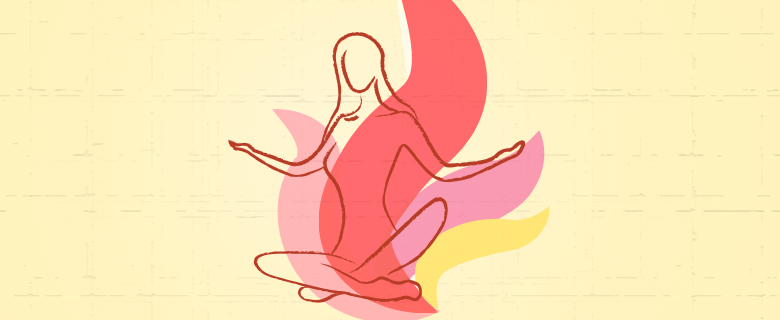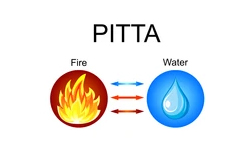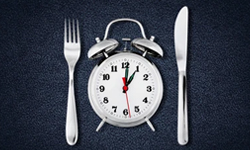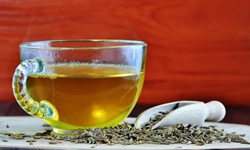
All about Pitta Dosha Vyadhi
It is a fundamental Ayurvedic belief that each of us are born with a distinct Prakruti or a body type and that Prakruti is based on the interaction between the tridoshas namely vata, pitta and kapha. Ayurvedic doctors always diagnose the Prakruti of a patient as it forms the basis for charting out customized health and treatment plans. The tongue test is generally used to identify the dosha imbalance and to find out which of vata, pitta, kapha (or any combination of these doshas) are vitiated.
Let’s find out about Pitta dosha and the vyadhis or diseases arising due to aggravated pitta in our body.
What is Pitta dosha?

According to Ayurveda, pitta (derived from the Sanskrit word tapa) means heat. Our body is made up of the 5 basic elements or the pancha mahabhutas – Vayu (air), Agni (fire), Jal (water), Akash (space) and Prithvi (earth), of which Pitta contains the 2 elements namely agni (fire) and jal (water). Pitta can be characterized as liquid, oily, hot, smelly, acidic and light. Pitta controls the digestive fire or agni in our body as well as metabolism, digestion, body temperature, vision, color & complexion of our skin, sensory perception, emotions and intellect. As pitta is the predominant force that controls our digestion, any imbalance or accumulation of pitta can lead to stomach/digestive ailments or pitta dosha vyadhis.
Pitta dosha imbalance symptoms

As pitta is associated with the agni (heat) element, individuals who are Pitta types are generally intelligent, driven and passionate in nature. Stress, emotional disturbance, consumption of excessive alcohol, sugar, meat can result in pitta accumulation leading to an acidic metabolism which can cause digestive problems, heartburn and diarrhea. Some common symptoms of pitta dosha include
- Sour taste in mouth
- Nausea
- Vertigo
- Increased hunger
- Gases & indigestion
- Excessive sweating
- Hot flashes
- Rashes, skin diseases like eczema
- Headaches & migraines
- Joint inflammation, arthritis
- Anger, short temperedness, emotional swings
Causes of Pitta dosha imbalance

In order to balance the pitta dosha it is necessary to identify the causes that cause the pitta imbalance in our body. Some known factors include…
- long exposure to sunlight
- incorrect diet or high consumption of salty, spicy, sour, fried foods
- consumption of food containing preservatives/chemical or processed/packaged products
- excess intake of caffeine, tea or alcohol
- anxiety or mental stress
- being overworked and under rested
- How can you pacify/balance Pitta dosha?
An aggravated pitta dosha can cause a lot of physical, emotional and mental problems. It is necessary to take corrective measures to ensure that the body’s metabolism is maintained. So, how can you reduce pitta dosha immediately? Here are some ayurvedic health tips to balance pitta dosha…
Eat well – Consume light, easy to digest foods and avoid heavy, difficult to digest food items. A diet that balances the pitta dosha should include foods (bitter, astringent, sweet) that have a cooling effect to counter the aggravated heat in your body. Include coconut, lemon, desi ghee, watermelon, mango, pomegranates, dates, figs, cilantro, bitter greens, leafy veggies, lentils, almonds, pumpkin seeds, etc. Avoid foods that are hot, sour, salty in nature, such as peppers, garlic, vinegar, fermented foods (idli etc.), deep fried items, extra salt, sour cream etc. as these will only add heat to the already hot & sharp pitta dosha.
Don’t miss mealtime – A person having pitta dosha must have their meals well on time. Skipping a meal or delaying your mealtime will further the tikshana agni or digestive imbalance and can cause hyperacidity, anger, low blood sugar, irritability etc. Generally, pitta is most aggravated between 12 – 1 pm in the afternoon, so make sure to have a good, healthy, full lunch on time.
Maintain a work/life balance – All work and no rest make for an imbalanced pitta dosha. Make sure you work hard but also relax enough too. Indulge in your hobbies, spend time with family & friends, sleep well, spend time outdoors, have a regular exercise schedule and enjoy the good things in your life.
Practice meditation & yoga for pitta dosha – Meditation is one of the best methods to calm your mind and reduce stress. Pranayama or breathing exercises are a very effective way of cooling the heat generated by pitta dosha. Yoga asanas such as Bhujangasana, Pashchimottanasana, Ardha Naukasana, Utkatasana etc. can help soothe the pitta dosha.
Avoid arguments – Pitta type individuals can be opinionated, like a good debate and may be argumentative, but these traits can also increase the pitta. So in case you find yourself in the middle of a heated argument, it is better to walk away, take a few calming breaths and return only after the situation is in control to ensure that your pitta does not shoot up.





Treatments to balance Pitta dosha

There are a lot of good Ayurvedic treatments to correct the pitta dosha. Make sure you seek advice from an expert Ayurveda doctor before altering your diet or lifestyle. Some remedies known to counter the pitta dosha include…
- Drinking aloe vera juice is a simple but very effective remedy to not only pacify the pitta dosha but also to ensure a healthy liver and skin.
- Massaging the feet and forehead with Brahmi oil before sleeping can reduce pitta symptoms such as headaches, heat, inflammation.
- Amla or Indian gooseberry is rich in Vitamin C and is one of the best remedies to cleanse Pitta from your system.
- Eating a teaspoon of homemade ghee is another excellent home remedy to reduce pitta.
- Consuming Cardamom or elaichi in your regular diet is beneficial for lessening pitta.
- Put cumin seeds (Jeera) in lukewarm water and drink this after lunch to reduce pitta.
Apart from these home remedies to cure pitta dosha, there are some Ayurvedic medicines, such as Avipattikar churna, Amlapitta vati, Yashtimadhu etc. which can help restore pitta balance. Please ensure that you consult your Ayurvedic doctor before taking any medicines.





0 Comment
No comments found.Thank you. Your comment will be visible after an approval.
Add your comment